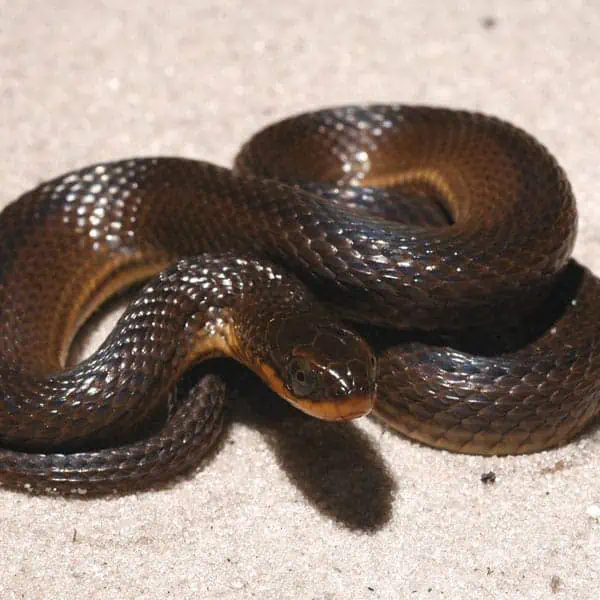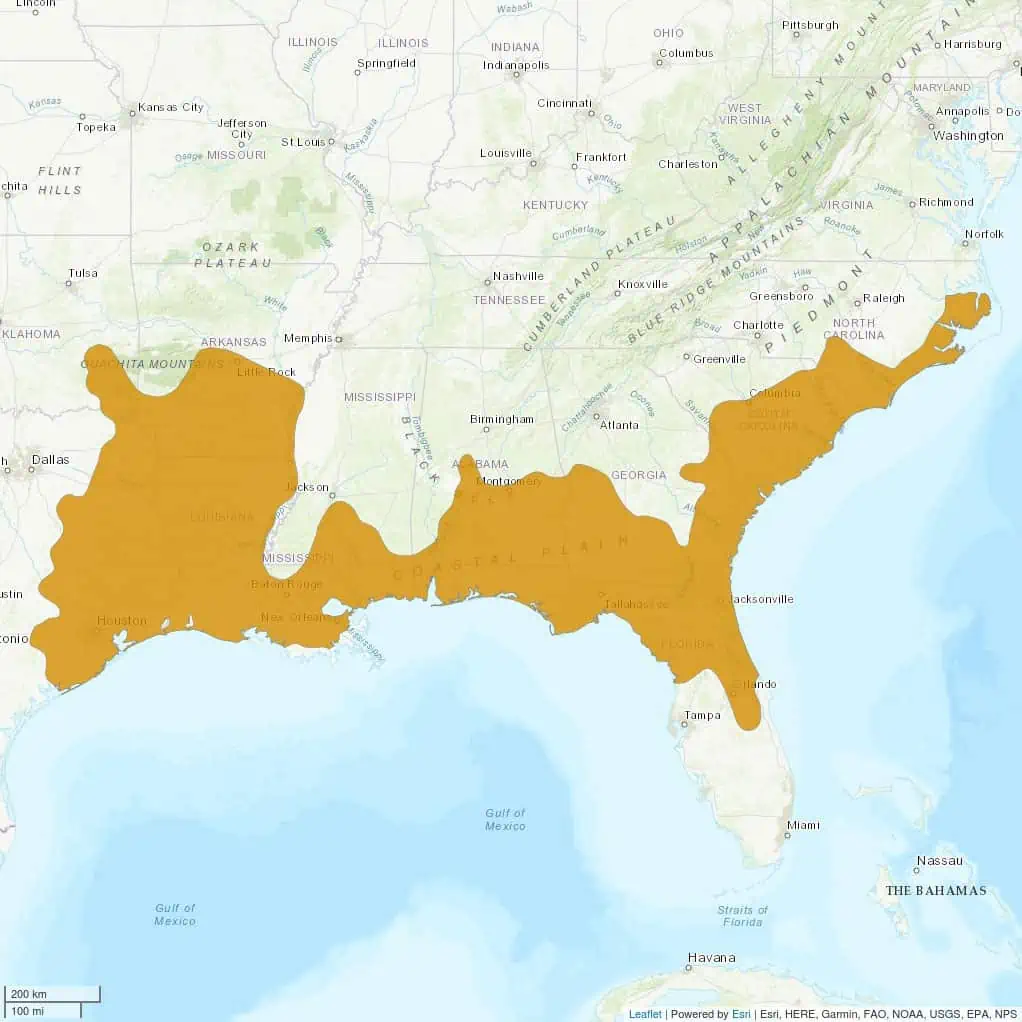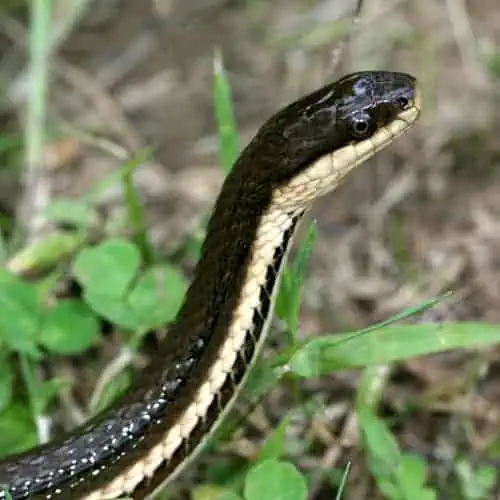
The crayfish snake, also called the glossy crayfish snake or glossy swampsnake, is a brown or olive medium-sized, semi-aquatic natricine snake that preys almost exclusively on crayfish. It is not venomous, spends most of its time in water, and is rarely encountered.
It can be found in still, freshwater environments throughout the southeastern United States, and has three subspecies: the ‘glossy crayfish snake’ (Liodytes rigida rigida) along the Atlantic coastal plain, the ‘gulf crayfish snake’ (Liodytes rigida sinicola) in the Gulf of Mexico, and the ‘delta crayfish snake’ (Liodytes rigida deltae) at the mouth of the Mississippi River.
On naming: the snakes of the genera Liodytes and Regina are known as ‘crayfish snakes.’ L. rigida is usually referred to by its nominotypical subspecies, the ‘glossy crayfish snake.’ In 2013 the glossy crayfish snake was reclassified from the genus Regina to Liodytes.
Crayfish Snake Native Habitat & Range

The crayfish snake prefers non-moving water such as marshes, bottomland wetlands, and pocosins in the southeastern United States, and finds suitable habitat from Virginia to east Texas. It will eat any type of crayfish, but seems to prefer burrowing ones in muddy bottoms (as opposed to rocky streams), and can be sometimes found inhabiting the burrows of their prey. Being mostly aquatic, its distribution is discontinuous and follows wetland and river systems.

Like many semi-aquatic snakes in this region of the United States, it has differentiated into an Atlantic and Gulf variety. L. r. rigida is found along the Atlantic coastal plain from North Carolina to the northern half of Florida, with one isolated population in Virginia. L. r. sinicola is found in the Gulf coastal plain, from southwest Georgia to east Texas. A third subspecies, L. r. deltae, is only found in the Mississippi River delta.
The glossy crayfish snake (L. r. rigida) will sometimes venture into brackish waters, which allows it to spread by entering new river systems along the coast.
Crayfish Snake Identification & Appearance

As its name suggests, the glossy crayfish snake has a shiny appearance, with a stout body and comparatively small head.
Its dorsal side (back) is olive to dark brown. It has two faint stripes running down either side, which can sometimes be difficult to see. Unlike Nerodia water snakes, the glossy crayfish snake does not have dorsal blotches. The ventral side (belly) is yellow to white, and the first several scale rows on the dorsal side have stripes of the ventral coloration. The belly has two rows of dark spots, which can be triangles or half-moons, running down either side of the midline, which converge near the head. These spots serve as a reliable indicator of the species.

The glossy crayfish snake is sometimes confused with the queen snake, a related species which also preys on crayfish. However, the queen snake can be differentiated by its resemblance to the common garter snake, with white bands along its side and belly.
Crayfish Snake Diet & Nutrition

The primary prey of L. rigida is freshwater crayfish, though it may occasionally feed on amphibians or small fish. As juveniles, they may also regularly consume dragonfly naiads (aquatic nymphs). These naiads are more nutritious than crayfish, but adults must switch to larger prey in order to satisfy their caloric requirements.
Crayfish can be a difficult prey for smaller snakes, and so L. rigida prefers to either constrict it or grab hold of the side of a crayfish with its chisel-like teeth and tear off chunks until the animal dies. Whereas most snakes swallow their prey head-first, L. rigida swallows tail-first, as the crayfish’s chelicerae (pincers) make it unwieldy otherwise.
Crayfish Snake Behavioral Traits

L. rigida is extremely secretive, and little is known of its behavior. It is most often encountered crossing land on rainy nights, in traps, or by flipping over aquatic vegetation.
If encountered, they tend to flee, not bite. If captured, they will emit a fetid smell from anal musk glands.
Crayfish Snake Reproduction Habits

Mating is done in the spring underwater, and females give birth underwater to 6 – 14 live young in late summer. The young resemble adults but have a pink belly.
Crayfish Snake Population Threats & Numbers

Since L. rigida is so secretive, it’s hard to know its population size – scientists aren’t sure if it’s rare or just hard to find. This uncertainty, along with its reliance on aquatic environments, makes it of conservational concern (it is protected in the state of Georgia).
L. rigida‘s reliance on crayfish for food makes them further vulnerable. While the southeastern United States is a global hotspot for freshwater crayfish diversity, many crayfish species are threatened by “pollution, urban development, damming/water management, and logging.”

